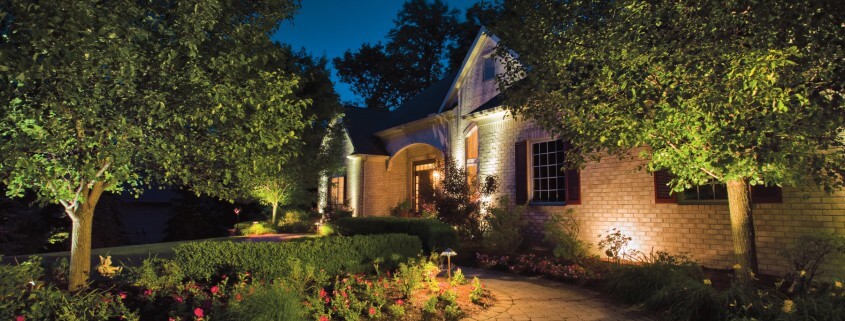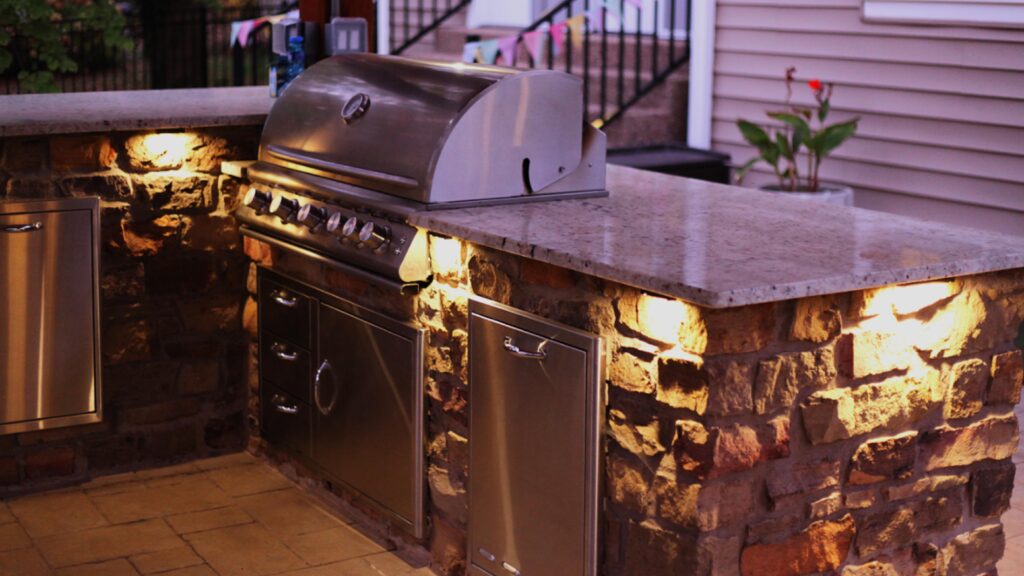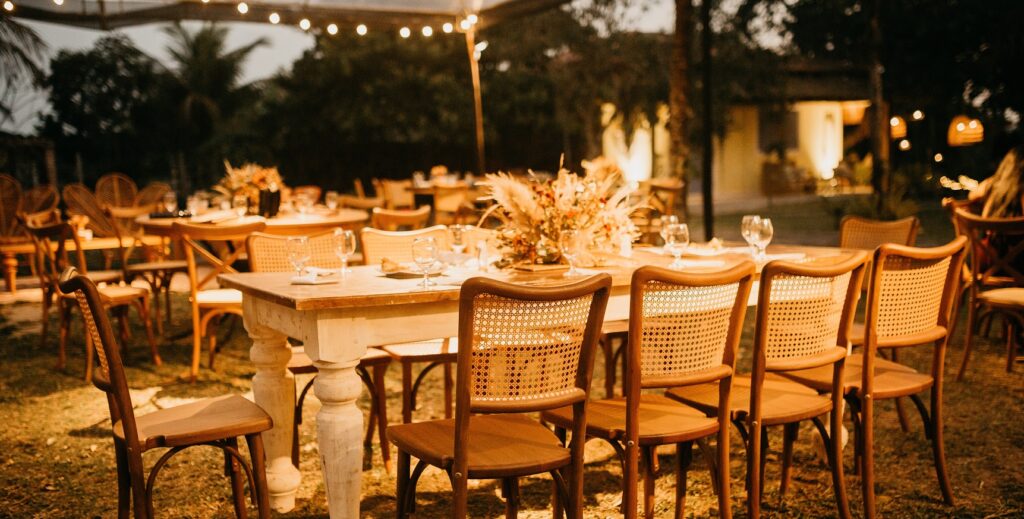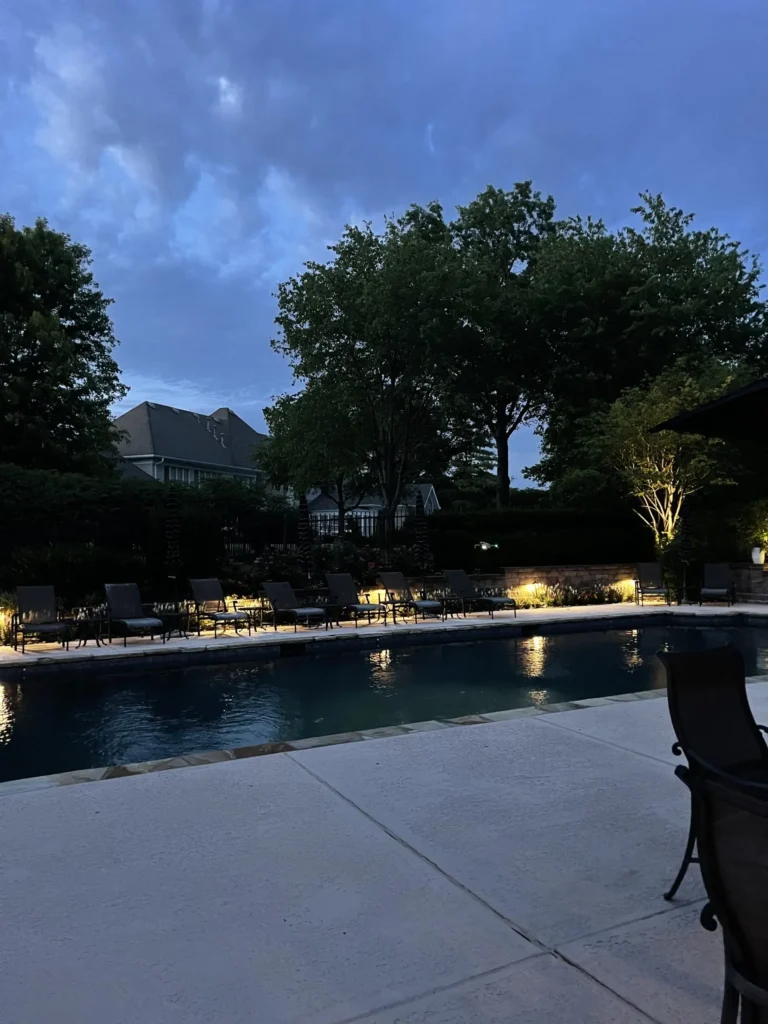You invest in outdoor lighting to make your home look great, feel safer, and extend your usable space. But sometimes it doesn’t turn out the way you imagine. Maybe it’s too bright, or not bright enough. Guests are squinting through glare instead of admiring the garden. The light feels cold rather than welcoming. Or there are big, shadowy gaps instead of a polished, warm look.
These are common issues, and the good news is: they’re fixable.
When outdoor lighting is done right, it can transform your outdoor spaces and improve your home’s curb appeal. Here are the most common mistakes we come across—and how you can avoid them.

1. Too much light
More light doesn’t mean better lighting.
One of the biggest mistakes is flooding an area with brightness. Typically this happens when you’re not using enough fixtures. You try to cover the entire area by turning up the brightness. Unfortunately, this doesn’t create the warm glow you imagine. Over-lighting flattens textures and washes out the natural beauty of your space. It can also create odd shadowed areas that bring a gloomy contrast to that blast of brightness. Plus, too-bright lights annoy your neighbors or contribute to light pollution.
Solution: Using the right amount of fixtures for each space is key. Each fixture has a certain amount of spread (the area covered by the beam). You want fixtures spaced and angled carefully for the spread to achieve the right look.
2. Harsh glare
You’ve probably experienced this: A path light that’s blinding instead of helpful, or a spotlight aimed right into your eyes.
Harsh glare looks bad, plus it’s uncomfortable and unsafe. It creates sharp contrast, which actually makes it harder to see the surrounding area. So instead of making spaces more usable and safe, these lights ruin the experience and limit visibility.
Solution: Angle is everything. Often, the glare situation is not a problem with a bulb that’s too bright; instead, the issue is where the beam is directed. Pathway lights, for example, need to be directed downward to illuminate the path (not upward!). Spotlights that highlight landscaping features benefit from shields, louvered covers, or angled placement.
3. Shoddy materials
Outdoor lighting lives outside. That means exposure to rain, humidity, heat, snow, and sometimes critters. Cheaper choices in fixture materials, wiring, or supports just won’t make it long. While it seems like you’re saving money, you end up having to spend more money on repairs and replacement.
To get the best materials while sticking to your budget, we recommend a project-based approach. Start with a comprehensive picture of all the elements of a landscape lighting design you’d love to have. Then, divide it into separate projects. Tackle each lighting project as your budget allows. (Give us a call for help with this; we’ll design a customized, project-based lighting system for you.)
Solution: Choose top-quality fixtures rated for outdoor use. Materials like brass, copper, or marine-grade aluminum are best for durability. And don’t skimp out on the wiring, connectors, bulbs, or support materials (like poles, tree hangers, etc.) An outdoor lighting system has to withstand all the elements. Use the best materials for the best results.
4. Poor placement
Even good lights in the wrong spot can ruin the effect.
One issue: uplighting a tree but placing the fixture too far out, so it highlights the lawn instead of the canopy. Or mounting a sconce too high on a post, where it spills light across the driveway but not down the path.
Another common scenario: scattering fixtures so far apart that the end result is little dots of light in a dark, vaguely threatening landscape. Definitely not the ideal look for improving curb appeal or creating a warm welcome.
Solution: Start with the big picture before putting fixtures in place. Like any system, outdoor lighting benefits from a thoughtful design. Think about how the space will be used and where people will be walking or sitting. Consider the distance between fixtures and test placement before you commit.
5. No layering
Lighting is functional, sure: It enhances safety and provides visibility. But it’s also part of your home’s aesthetic. The whole look and feel of your home after dusk depends on the visual design of your outdoor lighting. And if everything is lit the exact same way, the result is flat and boring.
A great lighting design involves layers. There are different lighting types built into a single design: Ambient light to set the mood, task lighting for usability, and accent lighting for features. This approach is what produces a polished, warm look.
Solution: Think about different lighting types for each outdoor space. Start with what you want to highlight, not just what you want to light. Then build around it using a mix of fixture types and techniques.
These are all fixable
Outdoor lighting should make your home look better and work better after dark. If something’s not right, chances are it can be corrected with a few thoughtful adjustments.
Take a walk around your yard tonight. Notice what’s working, what isn’t, and how light is interacting with your space. And if you’re not sure where to start, reach out. We’re here to help troubleshoot or design a system that gets it right.




